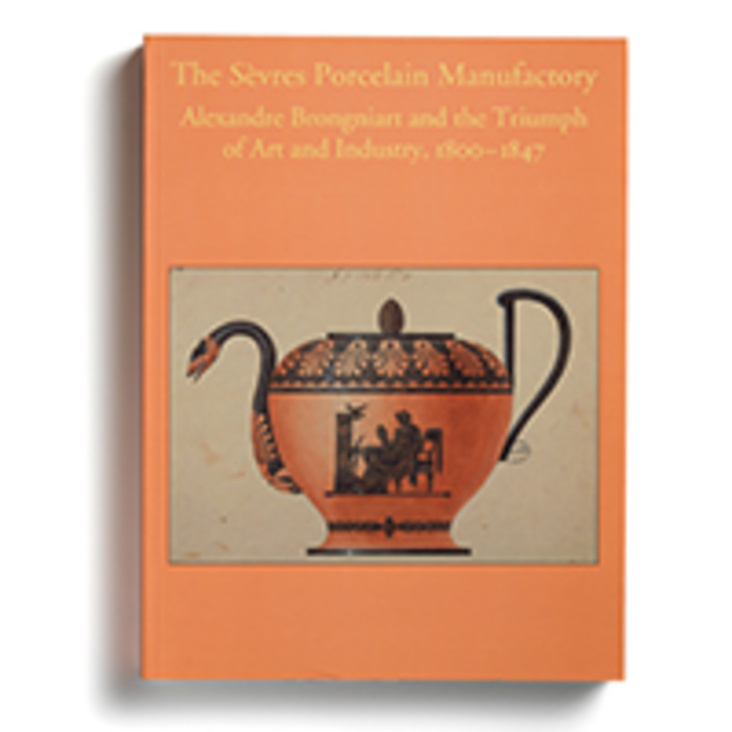The Zsolnay ceramics factory has produced some of the most beautiful and innovative artistic products in its field since the mid-19th century. Using imaginative techniques, this ambitious and creative factory, located in southwestern Hungary, has employed an extraordinarily wide range of styles in its work. The exhibition at the Bard Graduate Center, held from July 17 to October 13, 2002, examined more than 200 objects and designs produced over 150 years, as well as a selection of archival and contemporary photos that represent every stylistic trend, technical innovation, and aspect of production in the factory’s history. The exhibition’s contents represented a triumph of Hungarian applied arts and mirror the cultural, economic, and political development of Central and, later, Eastern Europe.
The exhibition was the first comprehensive look at the factory, including works from 1853 to the present, and therefore made an important contribution to understanding the development of the ceramic arts of Central and Eastern Europe. Works in the show were organized chronologically, covering the historicist, art nouveau, art deco, modern, and postmodern styles, and included ceramics for structures such as urns, fountains, mirrors, and small sculptures; tiles for furniture; and a range of decorative and utilitarian objects.
The factory, still in operation today, was started by the merchant Ignác Zsolnay in 1852 in Pécs. It initially produced modest, utilitarian wares for the local market, such as decorative architectural terracotta elements and simple dishes. It was Ignác’s brother Vilmos (1828–1900), regarded by his contemporaries as the greatest Hungarian potter, who brought the firm international acclaim and developed it into the largest ceramics manufacturing complex in Austria-Hungary and a worldwide exporter of its products. Moreover, Vilmos transformed the factory into a self-sufficient complex that employed skilled workers from abroad but also trained village potters on-site and produced its own raw materials.
Under Vilmos, the factory developed an artistic identity and made numerous technical breakthroughs. While it manufactured such items as industrial porcelain, terra-cotta for the construction industry, and tableware, the factory also became known for its production of richly decorated vessels, such as washbowls, jugs, and flowerpots. It also gained a reputation for its pioneering use of special glazes and ornamentation techniques, including the porcelain-faience method developed during the 1870s, the iridescent glaze eosin in the 1890s, and a frost-proof material, Pyrogranit, that beginning in 1885 was employed in the ornamentation of buildings’ exteriors. The factory also devised styles of decoration, inspired by ancient Greek, Egyptian, Hungarian folk ceramics, Persian and Turkish ceramic arts, the European Renaissance, and Chinese and Japanese ceramics that were adopted around the world.
In 1878 the Zsolnay factory received its first formal international recognition when it was awarded the Grand Prix at the Paris Universal Exposition for its porcelain faience. By the 1880s the factory was competing with top European ceramics producers. Later in the century it received awards at international shows and exhibitions, at which the firm’s wares were celebrated for their extraordinary richness of color and imaginative design.
During this time the firm also made its mark in the field of architectural ceramics, producing distinctive embellishments for some of the finest public and private buildings throughout the Austro-Hungarian empire. Working with leading Hungarian and Viennese architects, such as Otto Wagner, Max Fabiani, and Ödön Lechner, the factory earned acclaim for its beautiful ornamentation of buildings, often accomplished with colored tiles that evoked a distinct Hungarian style. By the early 20th century, due in part to a boom in the construction industry, architectural ceramics had become a significant aspect of the factory’s work.
Between 1900 and 1918 the factory reached the pinnacle of its success, receiving top prizes at exhibitions in Paris, Turin, St. Louis, and Milan. By that time, management of the enterprise had passed to Vilmos’s son, Miklós, under whom the factory’s own designers and commissioned outside artists created vases, wall plates, lamps, and jewelry trays in the art nouveau and early art deco styles, often using the lustrous eosin technique pioneered by the elder Zsolnay. These works, produced singly or in small production runs, became the “jewelry” of luxuriously appointed interiors.
After World War I, with Austria-Hungary disbanded and two-thirds of historical Hungary divided among neighboring states, the Zsolnay factory lost its sources of raw materials and then its international markets. The factory adapted by turning to mass production of industrial porcelain and household goods in addition to the creation of art objects. When Hungary fell under communist control in 1948, the factory was nationalized. For the next five years it concentrated almost entirely on industrial porcelain. Finally, in 1973 the Zsolnay name reappeared on the factory’s output. Today the factory is owned by a state bank and produces porcelain tableware and ornamental objects for the Hungarian market, while maintaining a workshop for eosin painters, a studio for the hand-painted porcelain-faience decorative objects, a center for the new products and for researching and producing new editions of the more creative and richly decorated works from its past history, and an architectural division.
The exhibition was accompanied by a fully illustrated catalogue, Hungarian Ceramics from the Zsolnay Manufactory, 1853-2001, edited by Eva Csenkey, and published by Yale University Press in association with the Bard Graduate Center. The book makes an important contribution to English-language scholarship on the development of the ceramic arts of Eastern Europe and, more broadly, the cultural and industrial evolution of Central and Eastern Europe during the mid-19th and 20th centuries. It features a historical introduction followed by 16 essays by European scholars, who examine every period of production in the factory’s history and consider the political, economic, and cultural contexts in which the factory operated. The book also includes detailed entries for all works in the show, biographies of the factory’s premier artists and of Zsolnay family members, and a glossary of ceramics production techniques.
















